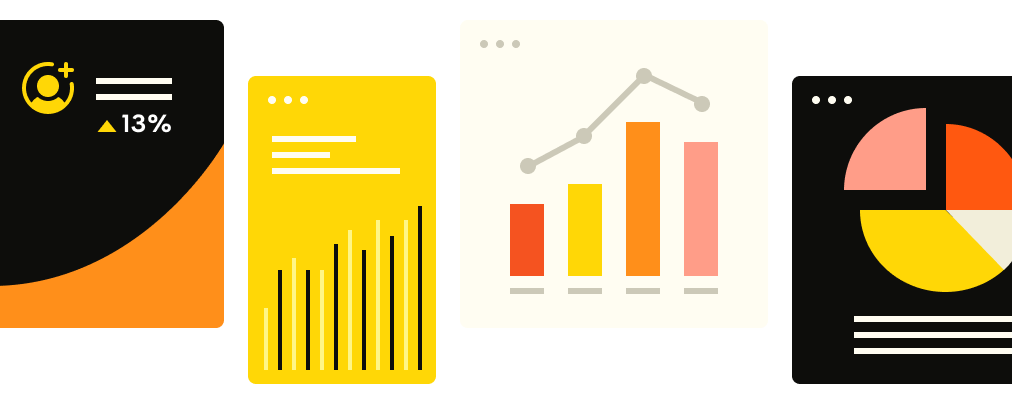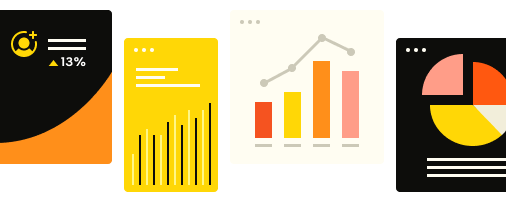Monthly subscriptions vs. annual subscriptions: A pricing analysis

One of the challenging decisions a business faces is figuring out how to price its subscription product or service. This can be especially challenging when you offer both monthly and annual payments for the same product.
Besides customer preferences, which play a key role in decision-making, the monthly billing vs. annual billing debate helps shape your business's financial health and scalability. Set the yearly price too low, and you could miss out on a lot of revenue down the road. Set it too high, and annual subscribers will have no incentive to commit to a longer term and may churn earlier than expected.
In this article, we’ll review the elements you must consider when pricing subscription offers, the benefits of monthly billing and annual contracts, the impact of seasonality in pricing, and tips to sell at the right price.
What to consider when setting the price of a subscription product
There are several elements to consider when pricing a product, and it all depends on your subscription offer, the industry you work in, the market dynamics, and economic conditions. Once you get a clear understanding of your audience demographics, preferences, and spending capacity, it's easier to align with the perceived value and affordability users expect.
There are three essential elements, however, that you should consider when setting your annual and monthly subscription prices. Let’s review them.
Value proposition and competitive advantage
Let’s go back to the concept of perceived value for a moment–how customers feel about a product and their willingness to pay for it. This is key to positioning your pricing competitively based on the perceived value and features of your product.
When you have a well-defined value proposition and clearly articulate how the product solves a specific problem or meets a need better than your competitors, the price-setting process will become a less challenging task.
Analyze the pricing strategies of competitors offering similar subscription products and start from there. Ask yourself the following questions:
Do they offer annual billing plans only, or do they have monthly subscription options, too?
What’s the benefit of joining an annual subscription model instead of monthly payments?
Do annual subscriptions require an upfront payment and what discounts do companies offer?
Profit margins and the discount rate for annual plans
When you plan to offer both yearly and monthly subscription plans, one thing to consider is your discount rate–the discounted price your customers get by signing up to your platform in an annual plan.
Recurly Research set out to find what are the most common pricing discounts offered in each industry for a product offered on both a monthly and yearly plan. We looked at over 1,000 different companies and calculated the first quartile, median (second quartile), and third quartile of their discount rates.
We used this formula to determine the Discount Rate, with M equal to Monthly Price and Y equal to Yearly Price:

For example, if Company X offers a product at a price of $10 per month and the same product at $120 on an annual subscription model, there is little incentive for the subscriber to sign up for the yearly plan since they won’t be receiving a price incentive by doing so. However, let’s say Company X sets the yearly price at $108. Now the subscriber is getting a $12 discount, or 10 percent, for paying for a year upfront.

This allows Company X to have the subscriber locked in for at least one year, whereas that same subscriber on a monthly plan could have churned within the first year of their subscription. For example, if the subscriber churned six months into their subscription, Company X would only net $60 rather than $108.
Here is a breakdown of discount rates in each of the major subscription industries:

The data above shows that the industry in which you operate can greatly impact what amount of yearly discount is commonly offered. In general, all the industry medians fell between 10-30%.
Offering a discount above 30% would seemingly devalue the incentive to sign up for a monthly plan, and a discount below 10% would offer no motive to sign up for an annual plan.
The most common discount rate across all industries was 16.7%. We posit that the reason for this is the prevalence of businesses setting their annual subscription price equal to ten times their monthly counterpart.
For example,
Monthly Price = $5
Yearly Price = $50
Discount Rate = 16.7%

This can be interpreted as the equivalent to giving a monthly subscriber two months free by signing up for the yearly plan.
The impact of seasonality on pricing
The impact of seasonality on subscription pricing will vary depending on the nature of your business, industry, and target audience. A well-thought-out pricing strategy that takes seasonality into account can help businesses predict revenue, optimize revenue, manage subscriber expectations, and improve customer retention.
As we dive deeper into the industry trends, you find that the education industry offers the highest discounts to its yearly subscribers by a substantial margin. This is most likely due to the seasonal summer churn that is common in this industry as a result of most students not being in school. Similar cyclical results are seen in the OTT industry, as significant numbers of signups are driven by live, seasonal events such as sports or awards shows.
Looking back at our churn benchmarks, we can see that those industries experiencing higher churn tend to offer higher discount rates. For example, publishing and entertainment has one of the lowest churn rates across all industries and also offers lower discount rates compared to most other industries. on the other hand, we see high-churn industries, education and consumer goods, offering the highest discount rates compared to all industries.
Pricing and discounting are common elements that prospects and subscribers use to evaluate a product or service. Understanding how your subscription business’ annual vs. monthly subscription prices compare to the peers in your industry gives you a measure against which to gauge these elements.
How Recurly helps you sell at the right price
No matter how great your product or service is, if you don’t have the right offer, it’s not going to sell. Strategic pricing is essential to your bottom line–whether you decide to offer monthly subscriptions only or go for a mixed offer with annual billing as well.
Setting the price for a new product is no easy feat, but working with an expert partner in recurring billing and management as Recurly can definitely help. With our enterprise-grade platform, you can:
Launch personalized products and offers: From that one-time sale to recurring purchases, you can get easy-to-use tools to configure flexible billing cycles and price points that put subscribers’ needs first.
Increase subscriber interest and improve retention: Configure trial offers, introduce discounts, cross-sell complementary services, upsell one-time products, and gift subscriptions to engage with subscribers throughout their journeys. This, additionally, helps you build a stronger community and a loyal customer base.
Experiment and measure for success: Stay ahead of competitors with data-driven dashboards, reports, and insights that the Recurly Analytics team provides.
Want to learn how can you reinvent offerings to beat the competition, subscriber demand shifts, and new buying behaviors? Check out this guide with seven proven strategies to help you overcome these challenges.


